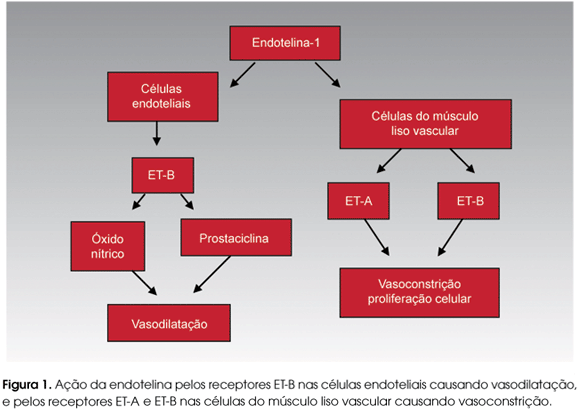Diabetic Nephropathy (DN) is a major chronic complication of diabetes mellitus (DM), and one of the main causes of new cases for dialysis, being associated with increasing mortality. The main risk factors for DN are hypertension, hyperglycemia, dyslipidemia, and genetic susceptibility. The renin-angiotensin system (RAS) plays an important role in genesis and progression of DN and there is evidence of an interrelationship between this system and the endothelins. Endothelins are powerful vasoconstrictor peptides and act as modulators of vasomotor tone, cell proliferation, and hormone production. These peptides act through two types of receptors (ET-A and ET-B) and are expressed on endothelial cells and vascular smooth-muscle cells. Activation of this receptor in renal cells leads to a complex signaling cascade resultanting in stimulation of mesangial cell hypertrophy, proliferation, contraction, and extracellular matrix accumulation. These hemodinamic renal alterations are associated with the onset and progress of renal disease in DM. Elevated endothelin-1 (ET-1) levels have been reported in patients with DM. There is evidence suggesting that an increase in the production of ET-1 leads to glomerular damage. The use of ET receptor antagonists has been reported as renoprotective, correcting the early hemodynamic abnormalities in experimental DM, reinforcing the importance of this system in DN.
Endothelin-1; Diabetes Mellitus; Diabetic Nephropathy



